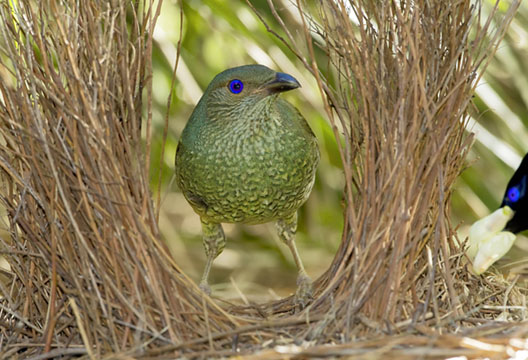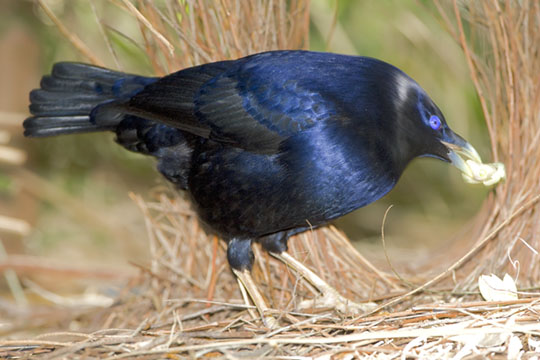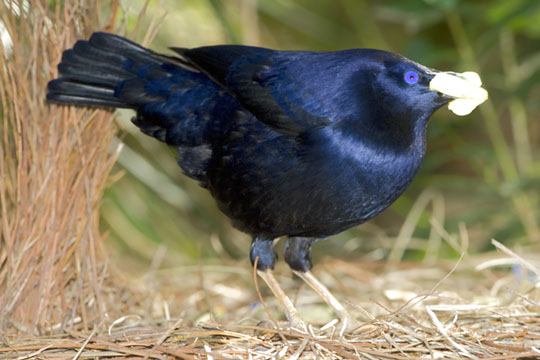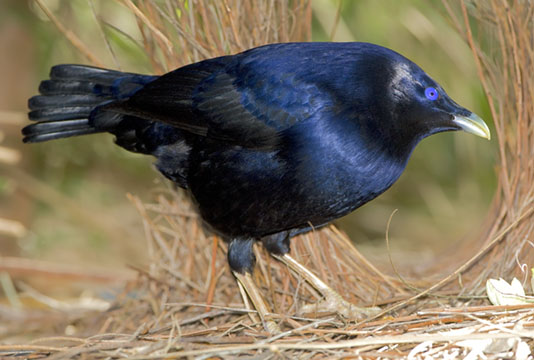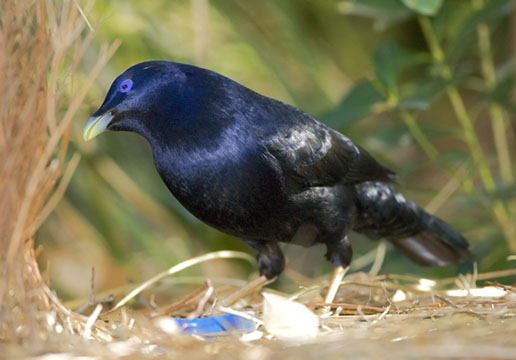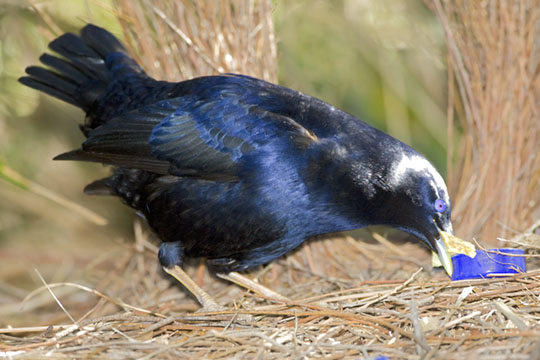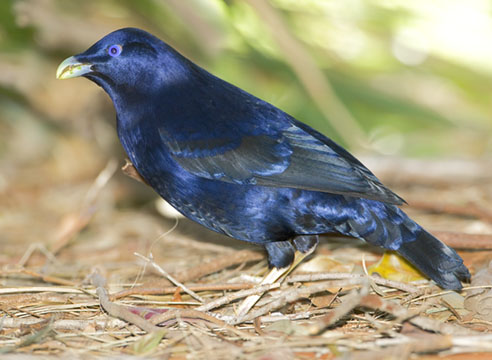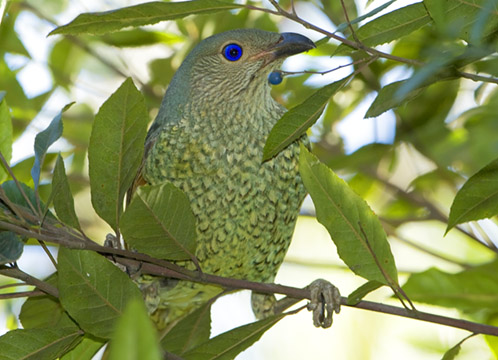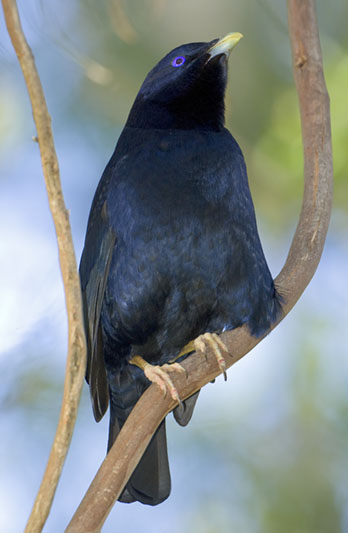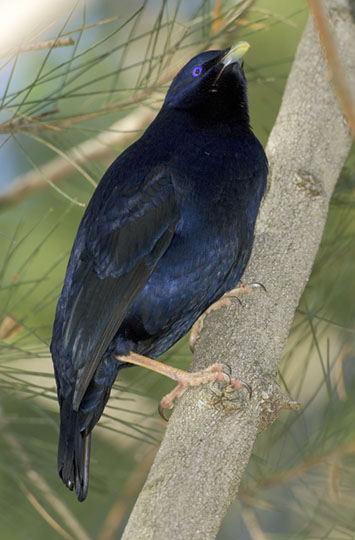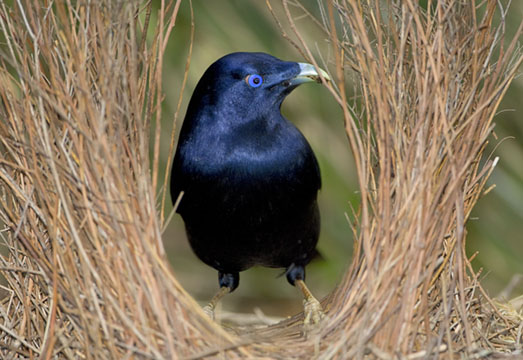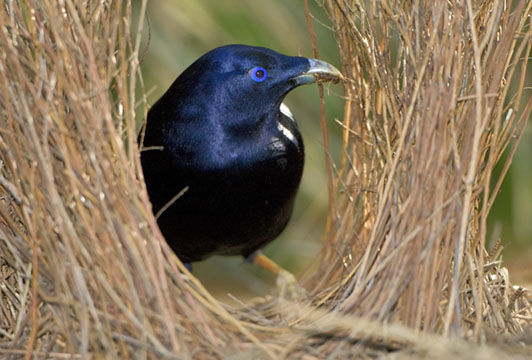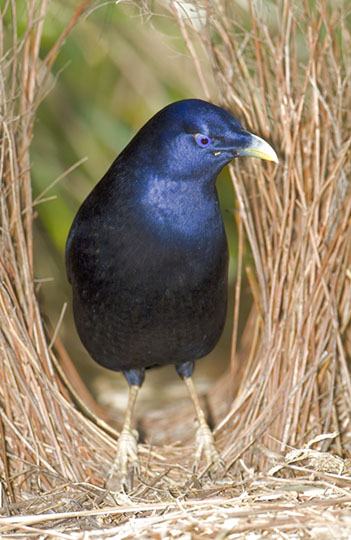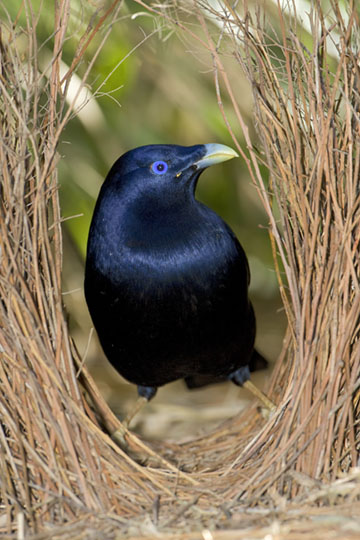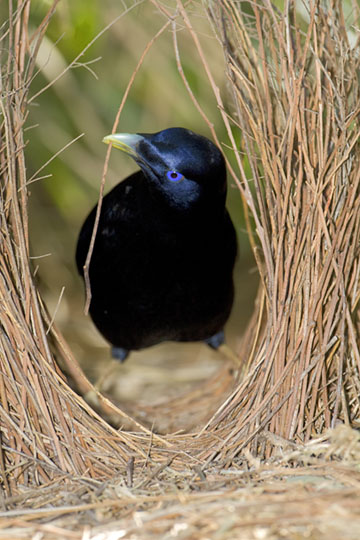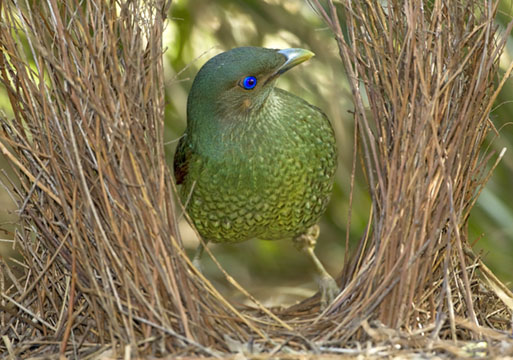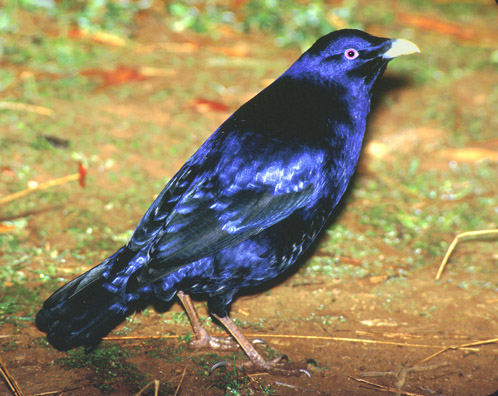|
Satin bowerbirds are world-famous for their flashy plumage, brilliant eyes, and above all for their wonderful courtship behavior. Males are deep indigo blue-black with luminous 'periwinkle' eyes; females are a camouflaged green but also have brilliant blue eyes (above right; the fuzzy blue spot in the upper left of the image two rows down at right is an out-of-focus female's eye). Males build special and unique structures called bowers, made of twigs and decorated with colorful objects -- the one in the images several rows down is 'painting' his bower with berry juice squeezed from fruit pulp held in his bill. Bowers are used for courtship, with the male dancing around, often carrying some of his decorations (the one below has some fresh flowers) while making an odd mechanical buzzing sound (images immediately below). If the female is sufficiently impressed and receptive (which isn't often), she will mate with the male within his bower. Research by Gerald Borgia and others has shown that females often visit several males' bowers before making a choice. Satin bowerbirds have a strong preference for blue and will steal all sorts of blue artifacts from any nearby human habitation. 'City' bowerbirds usually have lots of blue trash; the bird shown here had blue soda straws, bottle caps, etc. They are also fond of pale flowers (as seen here).
The bird in most of these images resided on the campus of the University of Wollongong in coastal New South Wales, Australia. The male at the bottom of the page, called 'Jock', is an international TV star, having appeared with David Attenborough in the 'Trials of Life' series episode on courtship. Jock lived in the vicinity of O'Reilly's guest house in Lamington National Park, near Brisbane, Queensland (and could be recognized by a missing hind toenail); when this photo was taken in 2001 he was more than 20 years old.
Other fun satin bowerbird facts (mostly from Gerry Borgia):
- Males don't acquire the blue-black adult plumage until they are 7 years old.
- Captive-reared males cannot build bowers, although they move sticks around. Bower building must be learned from practice.
- Young males closely resemble females. They go to adult male bowers, where they are courted (i.e., they act like females). This, plus numerous 'play' bowers that young males construct, apparently is important or essential in learning how to build and behave at a bower when they reach adulthood. The bird in the next-to-last row at left (green with a pale bill) is such a young male, inside a mature male's bower.
- Males spend a lot of time defending their bower, but they also take any opportunity to trash a neighbor's bower, often stealing the blue decorations.
- Unlike most birds, which have biparental care, in bowerbirds the male plays no part in caring for eggs or young. All he contributes is sperm.
|
|
|



